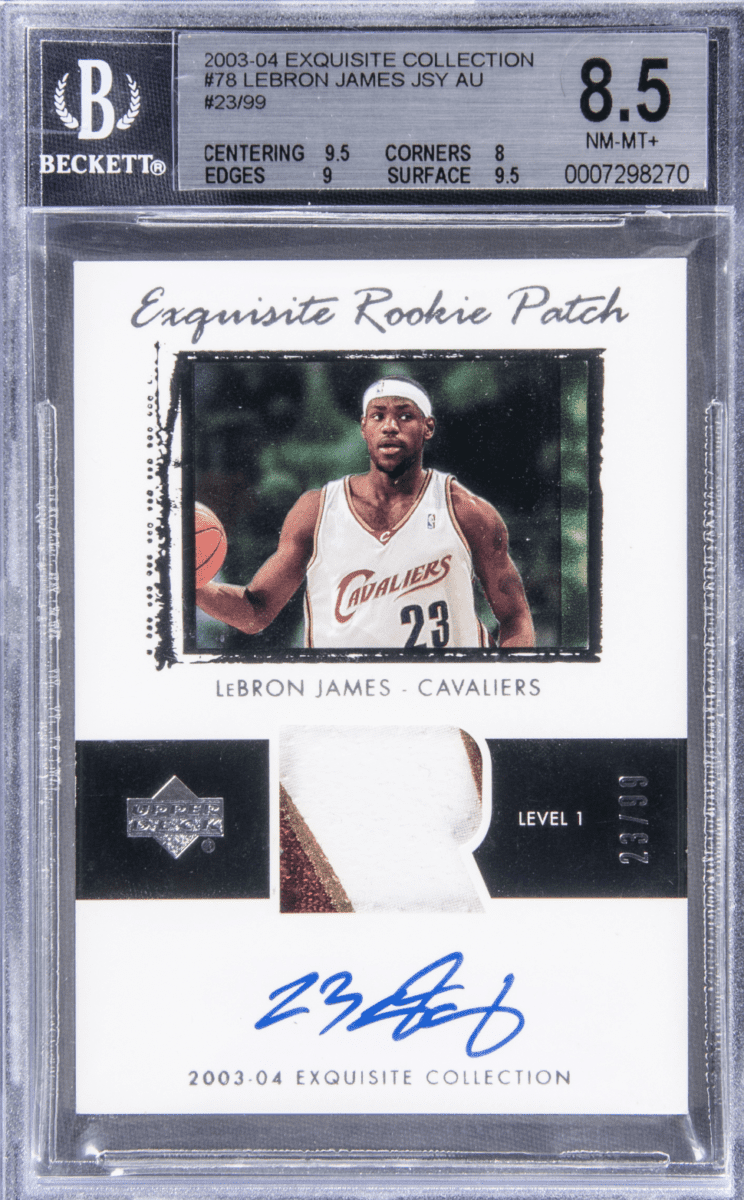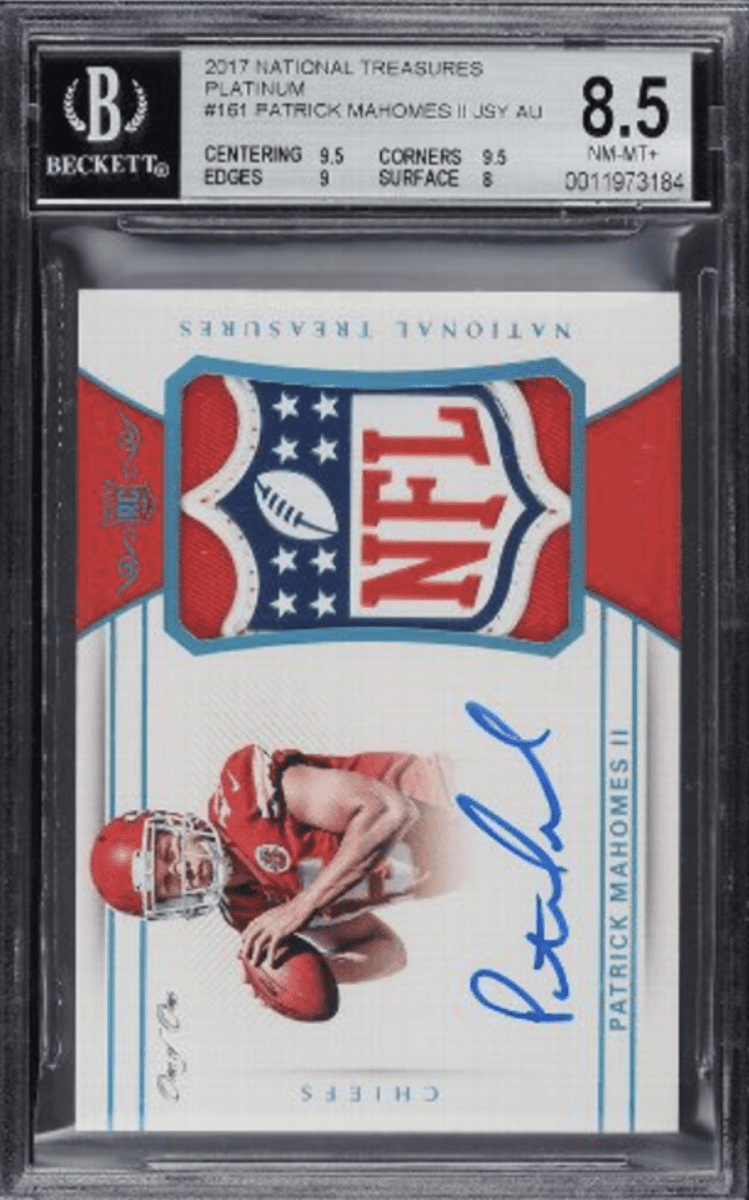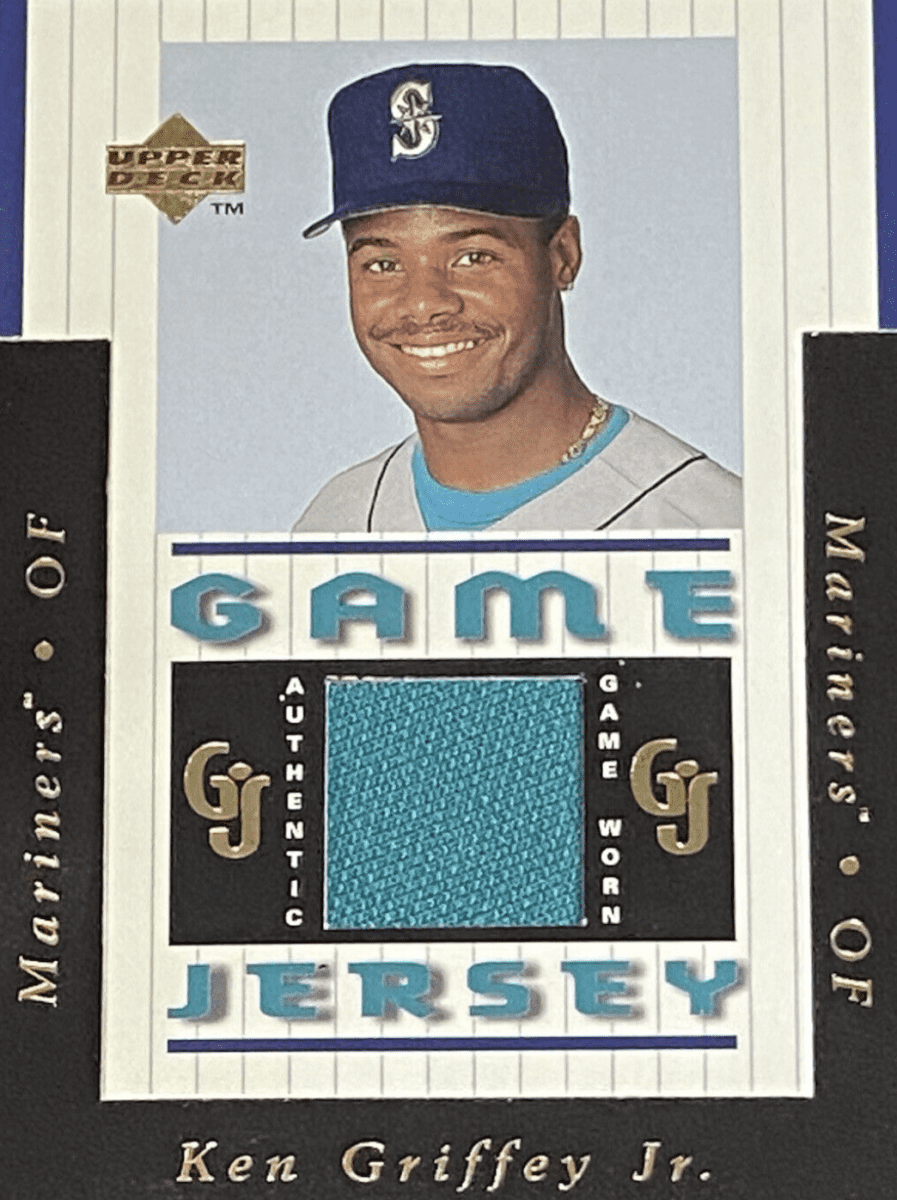While the earliest extant baseball card debuted in 1865, the industry as we know it today started in earnest with Goodwin Tobacco’s set of cards that debuted in 1886. Since then, baseball cards and sports memorabilia in general have grown into huge industries.
Like any other industry, to stay on top, companies forever innovate to sell more products and perhaps create the “Next Big Thing.” Right now, it’s looking like sports cards RPA—autographed cards with a piece of the athlete’s jersey attached— might be just that.
What Does RPA Mean?

So, what are RPA sports cards? The acronym stands for “Rookie Patch Auto,” and rather than being a grammatically literate phrase, it’s really just a list of three characteristics of the card.
- “Rookie” indicates that it’s the athlete’s rookie card or the first card issued for him as a professional athlete (technically, the athlete doesn’t have to be a rookie when that card gets issued).
- “Patch” designates that a piece of the athlete’s jersey—a patch of the garment—is attached to the card.
- “Auto” means the athlete has autographed the card.
Are Rookie Patch Auto Sports Cards Valuable?
Yes, they can be quite valuable. While something is worth only what you can find someone to pay for it, RPA cards often bring in high dollar amounts among collectors.

This 2017 Patrick Mahomes RPA fetched a whopping $4.3 Million in a 2021 private sale. The shocking sale price of this card shows just how valuable these 1/1 RPAs can be.
Rookie Cards
Rookie cards have long been prized by collectors because they represent the beginnings of a career.
For instance, having a Tom Brady rookie card is a bigger deal than holding on to a Bucky Richardson’s, since Bucky didn’t play long, played for the Houston Oilers (now defunct), and made only a tiny ripple in the NFL. Brady’s card, though, represents a look back at the beginning of a truly legendary career.
Consider the Star Wars movie franchise. Most people agree that “The Empire Strikes Back” is a better movie than the original “Star Wars,” but it was second. That first “Star Wars” movie remains a bigger deal. “Star Wars” was the franchise’s rookie card, and nothing will top it.
A card company might issue a card for an athlete every year of his career (meaning you could potentially release dozens depending on the longevity of a career). But they can only ever issue one rookie card. By definition, it’s a rare card.
Moreover, not every card collector started out maintaining a manicured collection. People whose card sets started with ones they got out of a pack bought at the grocery store with their allowance money might not have kept all of them. For all we know, people threw away Carlos Beltran rookies because they didn’t know the name. Forgive them though—they were just kids.
Patch Cards
The patch element of sports cards RPA products came about in 1996 when Upper Deck issued its Game Jersey set. When they were released, the odds of finding one of the ten cards in the set was 1 in 2,500, meaning you’d have to buy, statistically speaking, 25,000 packs to complete the collection.

But that ratio made finding one a pretty great feeling. Though the patch cards were bulky, they were new, and they caught on fast.
The thing about a patch card is that the athlete’s jersey is a finite commodity. You can print cards forever if you have ink and paper supplies, but you can only cut a jersey into so many pieces.
And for an RPA, the patch in question has to come from a jersey from the athlete’s rookie year.
Once the card company has the jersey in hand, they deconstruct the jersey, sectioning and cutting it, and applying it to the cards.
A run of RPA cards usually consists of 99 or fewer cards. Cutting the jersey into 10,000 pieces would render it unrecognizable as a piece of sports memorabilia.
Auto Cards
Sports card collectors have long debated whether you should have an athlete sign your copy of his card.
While some argue that it defaces the card and therefore lowers its value, others feel an autograph raises the card’s worth because that autograph is proof positive that the athlete interacted with the card.
Sports Card Industries Today
While for decades, Topps was the end-all, be-all sports card manufacturer, other companies have sprung up, focusing on specific sports or niche markets.
One of the most notable brands is Panini, an Italian company that started in 1961 and has grown into the industry’s top dog, producing football, soccer, basketball, hockey, and baseball cards.
In the United States, Topps started with baseball cars in 1938, grew to a behemoth covering many sports, and today has reverted to producing mostly baseball cards.
Another company with a historic focus on baseball is Upper Deck. They made a huge splash in the baseball card market in 1988 with a Ken Griffey, Jr. card but eventually got squeezed out of the sport. The brand only makes hockey cards today.
Several brands focus on single sports or are well-known for their entries regarding one sport.
- National Treasure, Optic, and Prizm are highly prized basketball cards.
- Five Star, Museum, and Sapphire, among others, produce baseball cards collectors love.
- High-quality football cards come from Donruss, National Treasure, Prizm, and Select.
- Panini and Topps are the top soccer cards collectors desire.
Final Thoughts
Sports cards RPA products give collectors another prize to hunt. When they find them, those collectors hold a piece of sports memorabilia with three qualities that up the ante in terms of the card’s rarity, which in turn ups the value:
- The R: an athlete will only ever have one rookie card.
- The P: there exists no infinite supply of an athlete’s jerseys, especially from his rookie year.
- The A: a card signed by the athlete is rare and prized because the player in question can’t spend all day every day signing cards and because the signature means the athlete interacted with the card.
As a way to stay close to the game, express your interests as a collector, and add value to your overall collection, RPA sports cards pay dividends.
